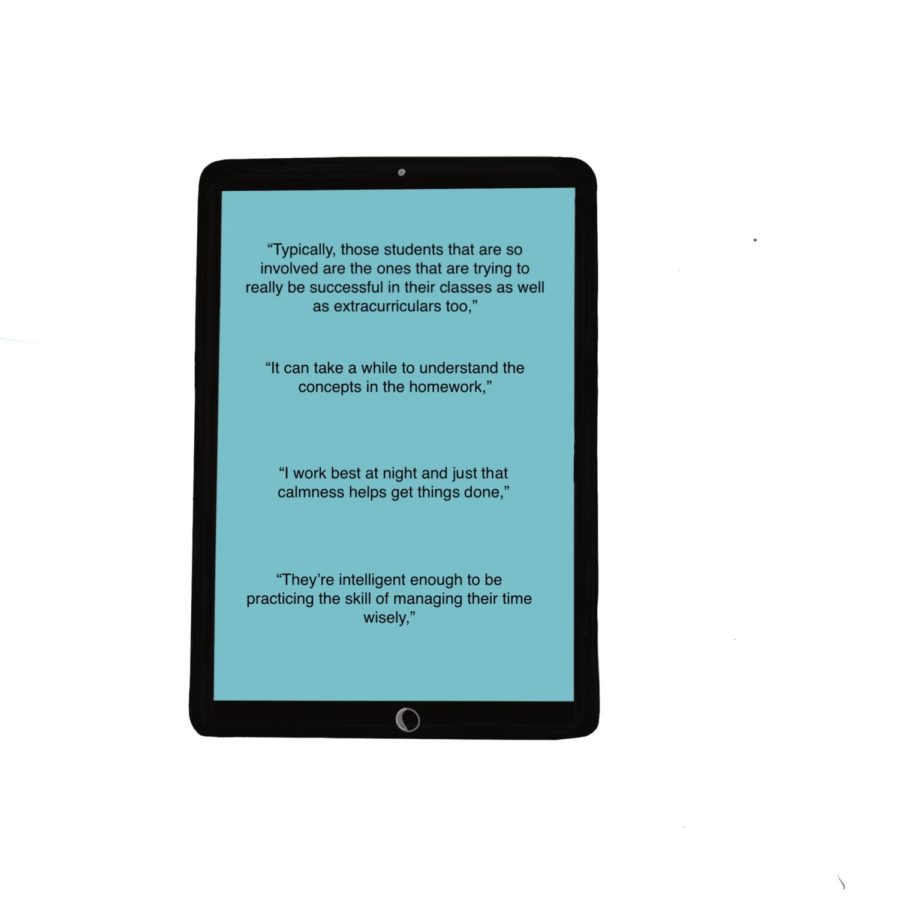OPS implements a lockdown on iPads
November 29, 2021
At the beginning of the school year students slowly discovered that their iPads routinely locked them out of their apps starting at 10 p.m. After speaking out on the occurrence students found that many of their teachers had no idea that this was happening.
What students and teachers didn’t know was that this shutdown was nearly a year in the making. According to Dr. Cheryl Logan, the Superintendent of Omaha Public Schools, parents and principals, primarily of Elementary schoolers, raised their concerns to the district about iPad usage last fall.
This led a team of employees at the Teacher Administration Center to decide when they should sunset iPad usage. The team studied usage reports to discover when most students were on their iPads and what apps were used the most.
They also took into consideration that every student, regardless of age, would have to have the same shut-off time. This was because the company the district hired to make the shutdown could not find a way to have multiple lock down times.
After looking at all the data the team determined a 10 p.m. curfew. The team then brought this proposal to Logan, after gaining her approval the lockdown was implemented.
As the school year pushed on and assignments piled up, some students found it difficult to complete their work. Upon hearing negative feedback from students, staff, and parents the district moved the lockdown from 10 to 11 o’clock.
Despite the extra iPad time that was allotted, some North students still struggled. Between extracurriculars and after-school jobs, it was difficult to get all work done by 11 p.m.
Tyrese Walker, 11, has now scheduled his nights around his homework. He is sure to start his work early in order to get his assignments done.
Although Walker is keen on keeping up with his assignments, he still has other responsibilities to fulfill. His job at Boys Town and being a part of Drama Club keep his afternoon schedule full.
Michelle Porter, a curriculum specialist, is very understanding of the fact that students have busy schedules.
“Typically, those students that are so involved are the ones that are trying to really be successful in their classes as well as extracurriculars too,” said Porter.
Not only do other commitments make getting homework in on time harder, but the difficulty of assignments also affects how fast assignments get done.
“It can take a while to understand the concepts in the homework, so while I’m trying to understand, the time’s still ticking,” said Walker.
Elizabeth Jefferson, 11, is also at a loss for time. Jefferson has started doing her schoolwork earlier in the day even though she prefers working at night.
“I work best at night and just that calmness helps get things done,” said Jefferson.
Not only has the lockdown changed Elizabeth’s schedule, but it has also added to her stress levels immensely. Between staying on top of assignments, going to school during a pandemic, having a job at Runza, college searching, and working towards scholarships, Jefferson is now worried about whether she’ll have enough time to do her homework.
She is especially frustrated because there was no notice from the district that told students they couldn’t be on their devices after a certain time.
“It’s frustrating, for them to make decisions without consulting us and actually listening to us,” stated Jefferson.
Moreover, there’s also the question of whether the district should be able to decide when students are allowed to work on their schoolwork.
Meghan Witty, a history teacher, thinks the time constraint on students’ devices is less than ideal.
“I work with juniors and seniors primarily. They’re intelligent enough to be practicing the skill of managing their time wisely, and if they don’t do it well and one night, they pull an all nighter… we’ve all been there,” said Witty.
Of course, there are loopholes with the time constraint on homework. Students with their own personal devices are able to surpass the 11 o’clock cut off. Students who only have access to the district issued iPads are not so lucky.
“If you only have the iPad, you need that to be accessible to you at all times just like other students have accessibility to their technology at all times. If this is supposed to be an equalizer and you’re arbitrarily choosing when to turn it off you’re taking away that equalizing effect,” stated Witty.
Despite some negative experiences, Logan said that most feedback regarding the shutdowns has been overwhelmingly positive. As of now the district has no intention of getting rid of the iPad curfew or further altering it.
“We feel comfortable with having a 6-hour window of the day where they’re unavailable,” said Logan.
While many feel frustration toward some of the iPad functions Logan wants to remind everyone of the services they provide.
“I think that one of the things that is the most important is that all children in our school district have a device, they have their own device, and they have connectivity to the internet that they do not have to worry about paying for,” said Logan.
It seems that iPad shutdowns are here to stay. Currently the lockdowns run from 11 p.m. to 5 a.m.



